Today Easter fires are burning in large parts of Germany
- Written by Portal Editor
Another custom, the origins of which are only partially clear, are the fires, which are mainly lit on the Saturday evening before Easter.
They are usually built from collected branches and twigs (shrub cuttings), but in some places also from stacked tree trunks.
In some places it is also customary to place a historical witch figure made of straw on top of the stack, which is burned with the Easter fire. The Easter fire also serves the assumption of having a cultic origin.
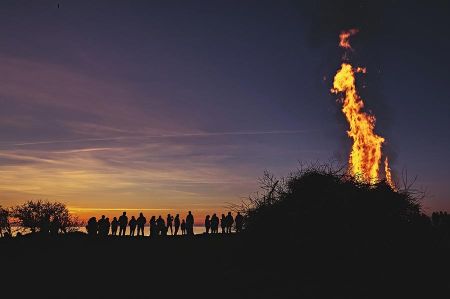 In any case, a cozy get-together around the warming Easter fire with appropriate drinks and food is almost a must for many people when the Easter fire calls on Saturday. If you ask the participants about the origins of this ceremonial burning of leftover wood, the argument that comes up is that the custom dates back to ancient times and serves to drive away winter once and for all.
In any case, a cozy get-together around the warming Easter fire with appropriate drinks and food is almost a must for many people when the Easter fire calls on Saturday. If you ask the participants about the origins of this ceremonial burning of leftover wood, the argument that comes up is that the custom dates back to ancient times and serves to drive away winter once and for all.
It was probably believed that the power of fire had a cleansing effect and could protect the germinating seeds from evil spirits, and so Easter fires were also considered a cult to ensure fertility, growth and harvest, with the ashes later being distributed over the fields.
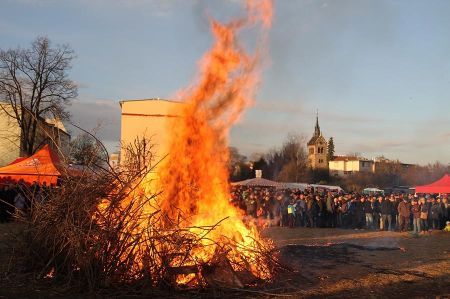 Even today, the piles of wood are erected in the selected fields so that they can be seen from afar. This custom is particularly common in rural areas, where villages hold competitions for the highest fire and guard the woodpiles on the nights before Easter. On the evening of Holy Saturday, people get together for beer or mulled wine, depending on the weather.
Even today, the piles of wood are erected in the selected fields so that they can be seen from afar. This custom is particularly common in rural areas, where villages hold competitions for the highest fire and guard the woodpiles on the nights before Easter. On the evening of Holy Saturday, people get together for beer or mulled wine, depending on the weather.
At this sociable gathering, a competition still breaks out today, with monetary stakes for public purposes such as: B. the fire brigade fund, about the time when a birch tree placed in a pile of wood burned or snapped. In some districts, the traditional Easter bonfires have also become tourist attractions that attract many visitors, such as the Easter bonfires along the Lower Elbe.
It was only later that this custom was adopted by Christians
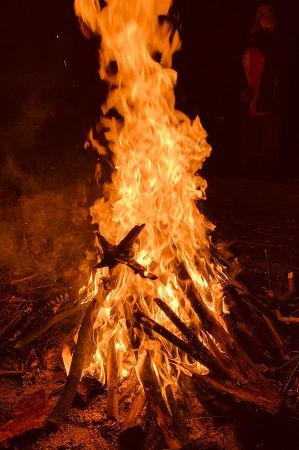 The Easter fire has been documented as a secular folk custom since 1559 in various documents. Pre-Christian traditions, on the other hand, have not yet been documented. The places discovered at various excavation sites since 1906 are mostly burn pits or cooking pits; a connection to Easter has not yet been established. Archaeological research refers to them as cult fire or fireplace sites.
The Easter fire has been documented as a secular folk custom since 1559 in various documents. Pre-Christian traditions, on the other hand, have not yet been documented. The places discovered at various excavation sites since 1906 are mostly burn pits or cooking pits; a connection to Easter has not yet been established. Archaeological research refers to them as cult fire or fireplace sites.
In the Catholic Church, before celebrating the Easter Vigil, a small fire is lit, which is called the Easter fire. After the congregation has gathered around the Easter fire, the priest lights the Easter candle on the fire, which is then carried into the dark church as light. The burning candle symbolizes Christ as the light of the world. Just as the people of Israel once followed the pillar of fire through the desert, believers follow Jesus Christ on the path from death to life. The remains of the holy oils from the previous year are often burned in the Easter fire itself.
Regionally different customs
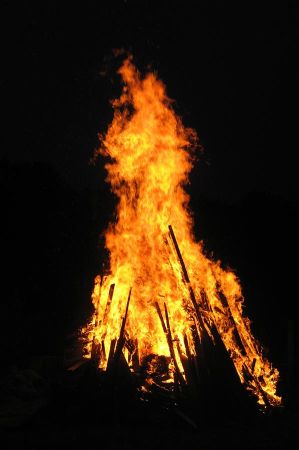 As already mentioned, Easter fires are mainly lit on the Saturday before Easter, but in some places, especially in Westphalia/Lippe, they are not lit until the evening of Easter Sunday. In Sauerland they are often burned down on Easter Monday evening. In Bavaria, Easter fires are also called Jaurus fire, Judas fire or Jaudus fire = Judas burning and are lit at different times on the Easter weekend due to different customs. In the Harz the fires are called Ostermeiler, they are made of brushwood and spruce greens, with a large spruce tree often standing vertically in the middle, which makes the fire visible from afar. In North Frisia, especially on the North Frisian Islands, the custom of burning biikes on February 21st is known. In the Fulda region there is a similar custom of the Hutzel fire on the Sunday after Ash Wednesday.
As already mentioned, Easter fires are mainly lit on the Saturday before Easter, but in some places, especially in Westphalia/Lippe, they are not lit until the evening of Easter Sunday. In Sauerland they are often burned down on Easter Monday evening. In Bavaria, Easter fires are also called Jaurus fire, Judas fire or Jaudus fire = Judas burning and are lit at different times on the Easter weekend due to different customs. In the Harz the fires are called Ostermeiler, they are made of brushwood and spruce greens, with a large spruce tree often standing vertically in the middle, which makes the fire visible from afar. In North Frisia, especially on the North Frisian Islands, the custom of burning biikes on February 21st is known. In the Fulda region there is a similar custom of the Hutzel fire on the Sunday after Ash Wednesday.
Conservationists warn of Easter fires
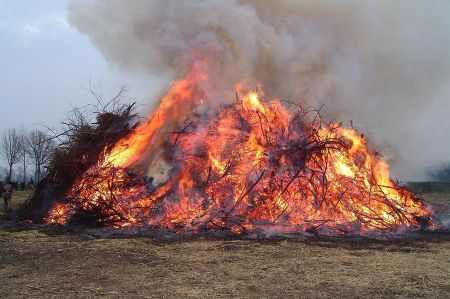 Since the piles of wood are accumulated over many weeks, small animals often hide in them and have to be chased away before the Easter fire is lit. A good solution is to move the pile of wood before lighting it, which in many places is monitored and done by the fire department. In many places, Easter fires now require a permit.
Since the piles of wood are accumulated over many weeks, small animals often hide in them and have to be chased away before the Easter fire is lit. A good solution is to move the pile of wood before lighting it, which in many places is monitored and done by the fire department. In many places, Easter fires now require a permit.
Some tree cuttings that cannot be composted due to insect infestation are also burned. Here, burning is actually the more environmentally friendly way to dispose of this contaminated material. In Westphalia, after Epiphany, Christmas trees are collected, piled up and burned by various youth associations.
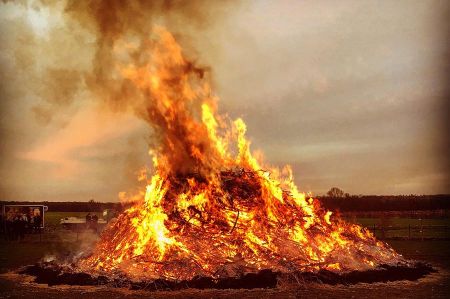 For reasons of environmental protection, Easter fires are now prohibited in some places, as problematic materials were often burned.
For reasons of environmental protection, Easter fires are now prohibited in some places, as problematic materials were often burned.
No matter how everyone feels about the customs of the Easter fire, an open, blazing fire in the evening sky is always nice to see, as it conveys a little of the campfire romance and longing for adventure.
Please read as well:
Amazonia by Yadegar Asisi – Fascination of tropical rainforest
